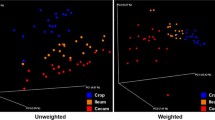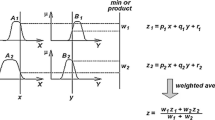Abstract
This study was carried out to investigate the ability of major mathematical methods to estimate intestinal broiler microflora population. Artificial neural network (ANN), coactive neuro-fuzzy inference system (CANFIC), and artificial neural network genetic algorithm (ANNGA) were used in this respect. The lactic acid bacteria and Enterobacteriaceae were applied as models of microflora. Input and output variables were considered as time and microflora population, respectively. The best model of ANN, CANFIC, and ANNGA was determined based on the coefficient of determination and root mean square error criteria. The results of the current study have shown that ANN, ANNGA, and CANFIS are accurate methods to estimate lactic acid bacteria and Enterobacteriaceae. The highest accuracy of microflora estimation was related to 7 days of age. The efficiency of intelligent models to lactic acid bacteria and Enterobacteriaceae has shown that ANNGA had better prediction between mentioned models. The models estimated Enterobacteriaceae population better than that for lactic acid bacteria.




Similar content being viewed by others
References
Patterson JA, Burkholder KM (2003) Application of prebiotics and probiotics in poultry production. Poult Sci 82:627–631
Kisi O, Yildirim G (2005) Discussion of ‘estimating actual evapotranspiration from limited climatic data using neural computing technique’ by Sudheer KP, Gosain AK, Ramasastri KS. ASCE J Irrigation Drainage Eng 131(2):219–220
Smirnov A, Perez R, Amit-Romach E, Skllan D, Uni Z (2005) Mucin dynamics and microbial populations in chicken small intestine are changed by dietary probiotic and antibiotic growth promoter supplementation. J Nutr 135:187–192
Lan Y, Xun S, Tamminga S, Williams BA, Verstegem MWA, Erdi G (2004) Real-time PCR detection of Lactic acid bacteria in cecal contents of Eimeria tenella-infected broilers fed soybean oligosaccharides and soluble soybean polysaccharides. Poult Sci 83:1696–1702
Barrow PA (1992) Probiotics for chicken. In: Fuller R (ed) Probiotics: the scientific basis. Chapman and Hall, London, pp 229–234
Zoetendal EG, Akkeremans ADL, De Vos WM (1998) Temperature gradient gel electrophoresis analysis of 16S rRNA from human fecal samples reveals stable and host-specific communities of active bacteria. Appl Environ Microbiol 64:3854–3859
Apajalahti JHA, Kettuneen A, Holben WE, Nurminrn PH, Rautonen N, Mutanen M (2002) Culture-independent microbial community analysis reveals that inulin in the diet primarily affects previously unknown bacteria in the mouse cecum. Appl Environ Microbiol 68:4986–4995
Lu J, Idris U, Harmon B, Hofacre C, Maurer JJ, Lee MD (2003) Diversity and succession of the intestinal bacterial community of the maturing broiler chicken. Appl Environ Microbiol 69:6816–6824
Escalante-Minakata P, Ibarra-Junquera V, Rosu HC, De Leon-Rodriguez A, Gonzalez-Garcia R (2009) Online monitoring of Mezcal fermentation based on redox potential measurements. Bioprocess Biosyst Eng 32:47–52
Hemati Matin HR, Saki AA, Aliarabi H, Shadmani M, Zare Abyane H (2011) Intestinal broiler microflora estimation by artificial neural network. Neural Comput Applic. doi:10.1007/s00521-011-0553-2
Engberg RM, Hedmann MS, Jensen B (2002) The influence of grinding and pelleting of feed on the microbial composition and activity in the digestive tract of broiler chickens. Br Poult Sci 43:569–579
Takagi T, Sugeno M (1985) Fuzzy identification of systems and its applications to modeling and control. IEEE Trans Syst 15(1):116–132
Goldberg DE (1989) Genetic algorithm in search, optimization and machine learning. Addison-Wesley, Reading, MA, p 412
Williams BA, Verstegen MWA, Tamminga S (2001) Fermentation in the large intestine of single-stomached animals and its relationship to animal health. Nutr Res Rev 14:207–227
Kim S, Kim H (20008) Neural networks and genetic algorithm approach for nonlinear evaporation and evapotranspiration modeling. J Hydrology 351:299–317
Acknowledgments
Our special thanks to Tarbiat Modares University for providing facilities and financial support for this study. We also wish to thank the Saeed Yakhkeshi for their excellent collaboration.
Author information
Authors and Affiliations
Corresponding author
Rights and permissions
About this article
Cite this article
Hemati Matin, H.R., Saki, A.A., Bayat Varkeshi, M. et al. Comparison and validation of artificial intelligent techniques to estimate intestinal broiler microflora. Neural Comput & Applic 23, 61–66 (2013). https://doi.org/10.1007/s00521-012-1059-2
Received:
Accepted:
Published:
Issue Date:
DOI: https://doi.org/10.1007/s00521-012-1059-2




